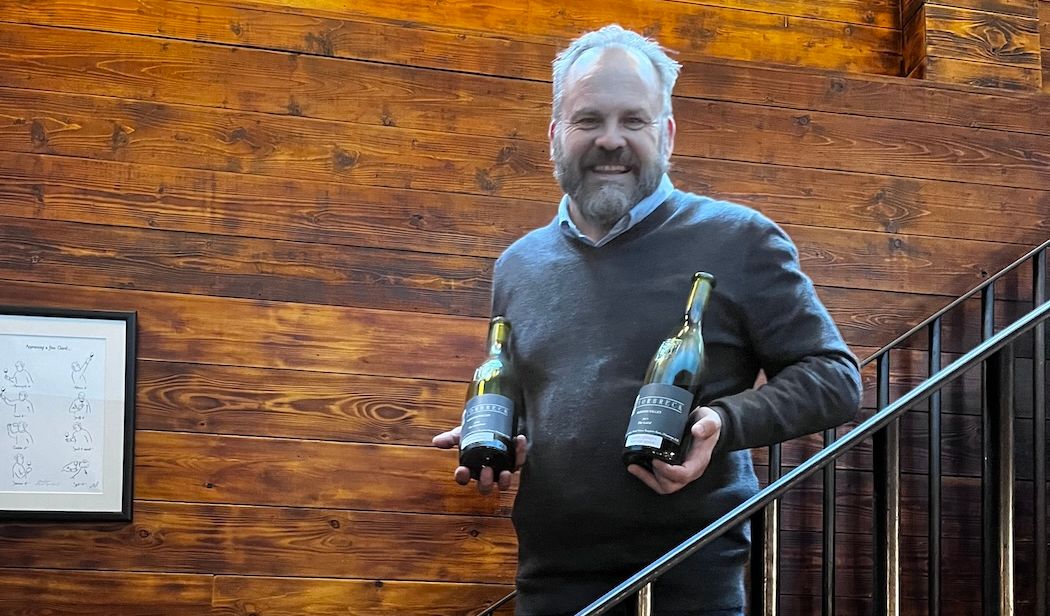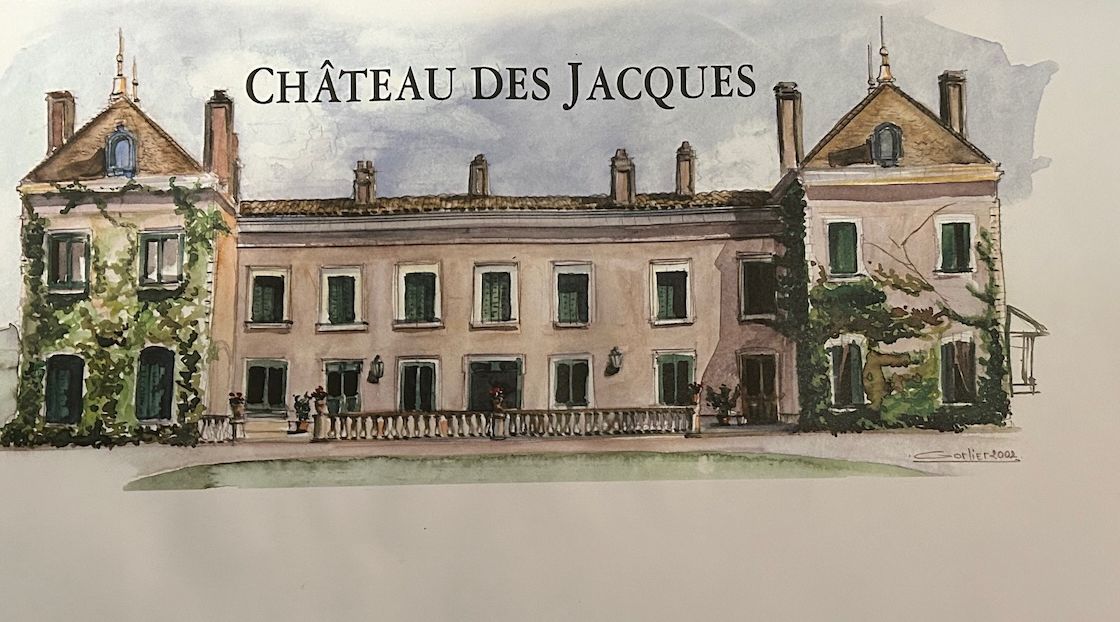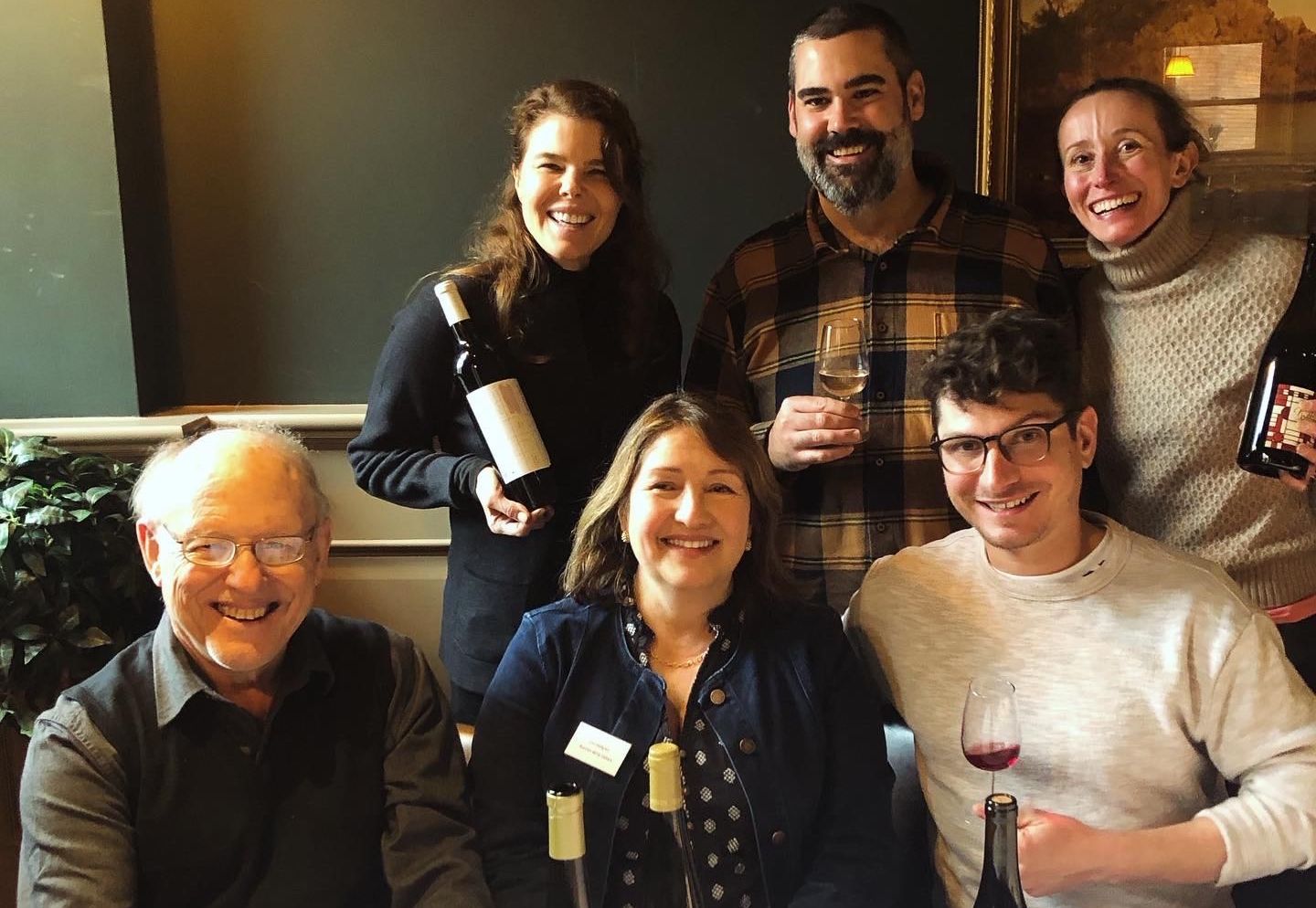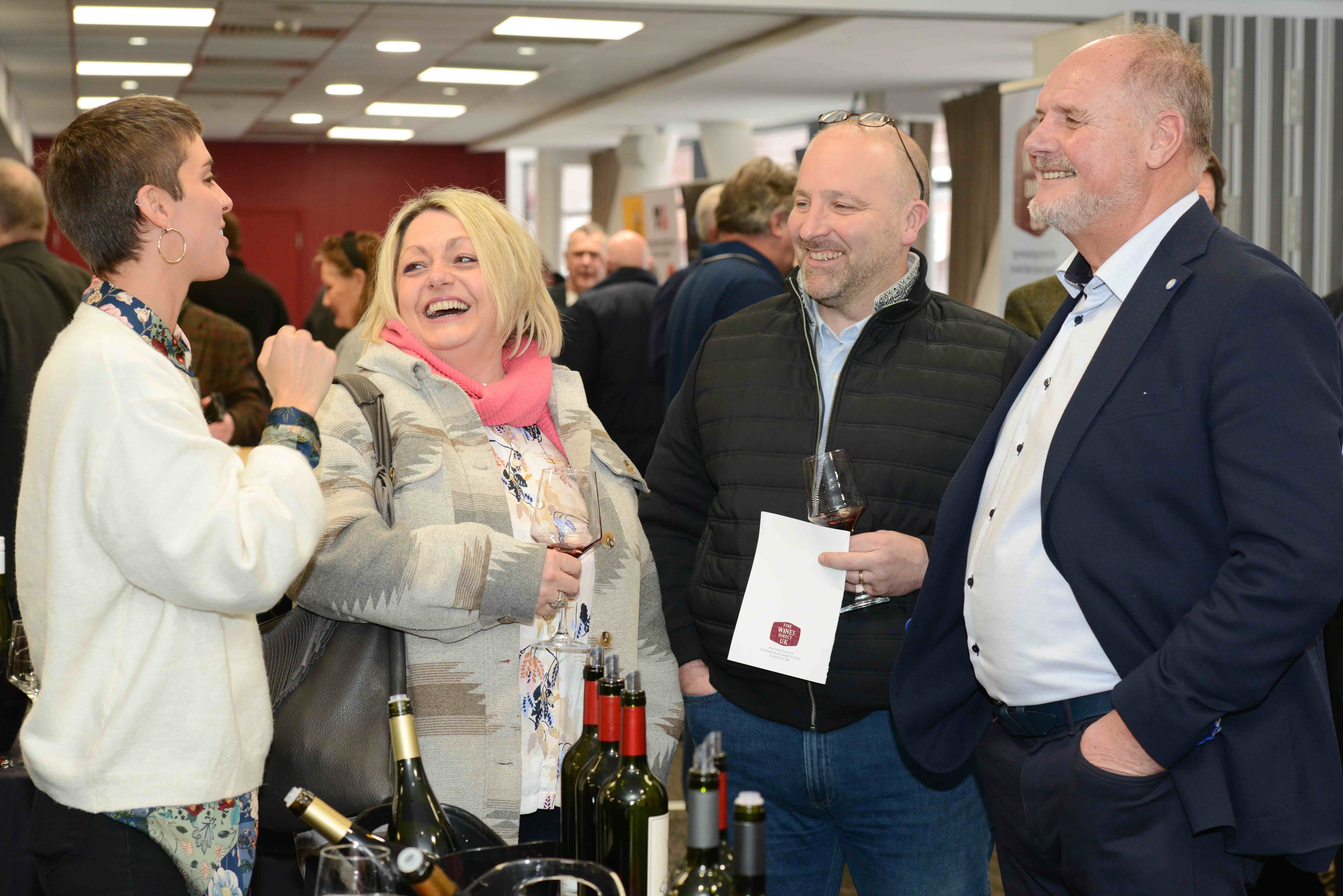“You could now make it easy for yourself and switch completely to dry wines – from an economic point of view that would certainly make sense. But we think that the wines with a discreet fruit sweetness simply belonged here and that they also have to be cultivated and further developed,” says Frank.
Think of the Nahe and you could be forgiven for immediately thinking of Donnhoff, this small German region’s best known producer. But although the Nahe has just under 4200 hectares there are eight other key producers one of whom, Emrich-Schönleber, just seems to get better with each passing vintage.
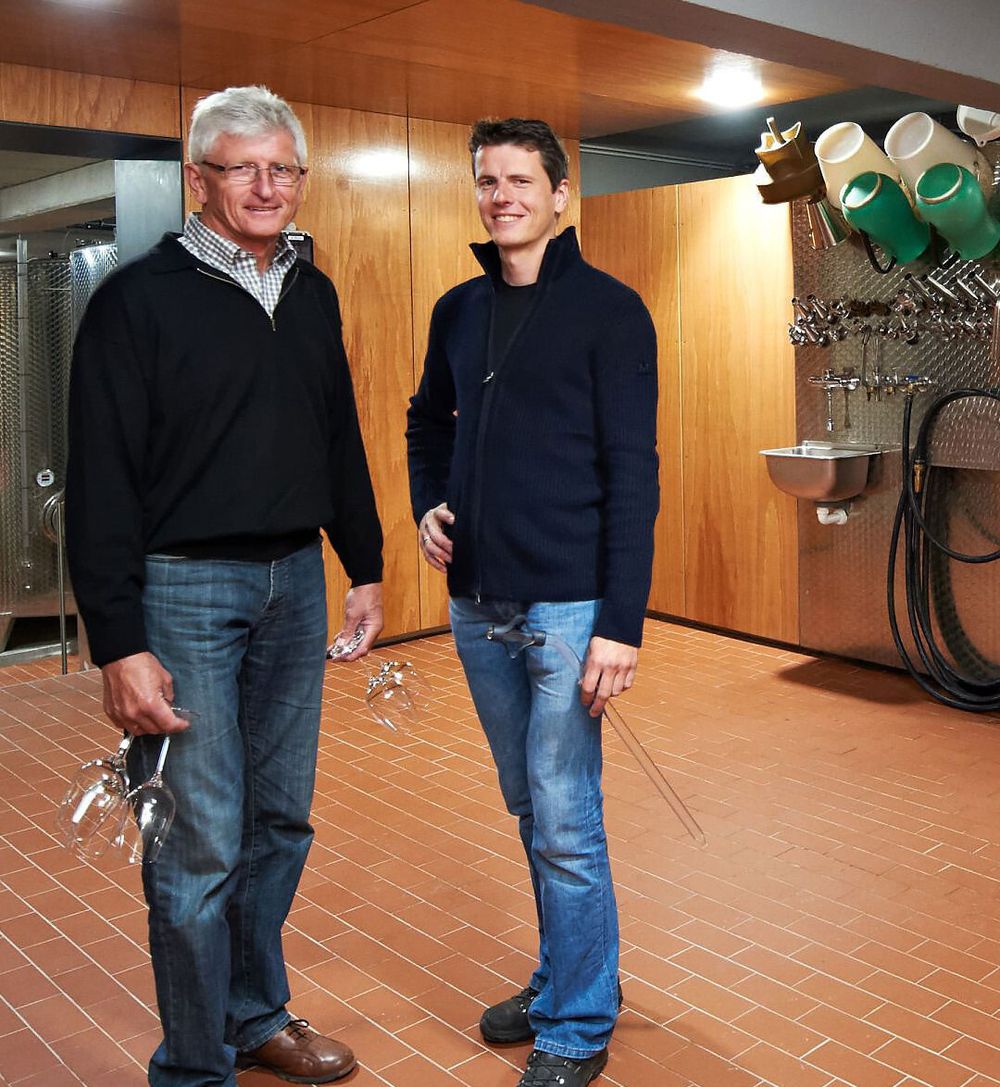
Like father like son: Frank Schönleber with his father Werner.
Like Donnhoff, Emrich-Schönleber is an exponent of single vineyard Rieslings, allowing the geological variation of the region’s soils to be transported through a sizeable portfolio of 21 wines.
Unlike Donnhoff, however, which has been producing wine since the mid-Eighteenth century Emrich-Schönleber was established much more recently as a sole wine-making estate in the 1960s by current winemaker/ owner Frank Schönleber’s grandfather. Franks’s father Werner Schönleber took over in the early 1970s and expanded it from just two hectares into the 20 hectare estate it is today.
Of the Nahe’s 300 individually-named vineyard sites, Emrich-Schönleber owns six – the one most closely associated with the estate being the slate and quartzite soils of the Halenberg with Frühlingsplätzchen a close second.

The great Halenberg site that was re-cultivated by Werner Schönleber
Riesling with a near-perfect balance
The Nahe river runs north into the Rhine at Bingen, at the western end of the Rheingau, and the best wines are said to have the elegance of Rheingau wines, crossed with the body of a Rheinhessen and the acidity of a Mosel wine. At Emrich-Schönleber intense work in the vineyard and spontaneous fermentation in old oak casks, along with ageing in steel vats, produces intense Riesling that combine floral qualities with profound minerality in wines that have enormous ageing potential. The wines have a near-perfect balance – chiseled and glossy, energetic and saturated, pure fruit matched with soil and mineral.
Frank Schönleber, who is the owner and cellarmaster, started working at his father’ estate in 2005 and took over in 2018, concentrating on the cellar while his father specialised on the vineyards, re-cultivating the great Halenberg site and working generally on the particularities of the individual plots. Although he technically retired three years ago he is still in the vineyards every day.
Interestingly Frank says that, although his range comprises a variety of sweetness levels, financially speaking it would make most sense just to produce dry whites, which make up the bulk of their production and which they are most famous for – such has the worm turned against wines with high residual sugars.

Frank Schönleber, Zoom tasting 2021
“Demand has gradually declined in favour of the great dry wines. You could now make it easy for yourself and switch completely to dry wines – from an economic point of view that would certainly make sense. But we think that the wines with a discreet fruit sweetness simply belonged here and that they also have to be cultivated and further developed. We are sticking to this tradition!” says Frank, “The decreasing demand in the past was largely due to us winegrowers themselves – because the Spätlese became sweeter and sweeter and had less and less drinking animation. Today they are much finer, more filigree and racier again.”
Before Schönleber took over the reins from his father he studied at Geisenheim as well as had interships with Toni Jost in the Middle Rhine and Franz Künstler. His ambition moving forwards is to continually develop the vineyards with sustainability a key tenet, but also to start holding back some of the cuvées until they have reached drinking maturity.
Authenticity and character are also fundamental to Emrich-Schönleber’s philosophy which is why he believes his ‘Mineral‘ Riesling is the perfect introduction to his wines for someone that doesn’t know them – that it immediately shows you where the wines comes from
“You can taste the stamp of origin right from the first sip,“ he says.
So how were the wines tasting?
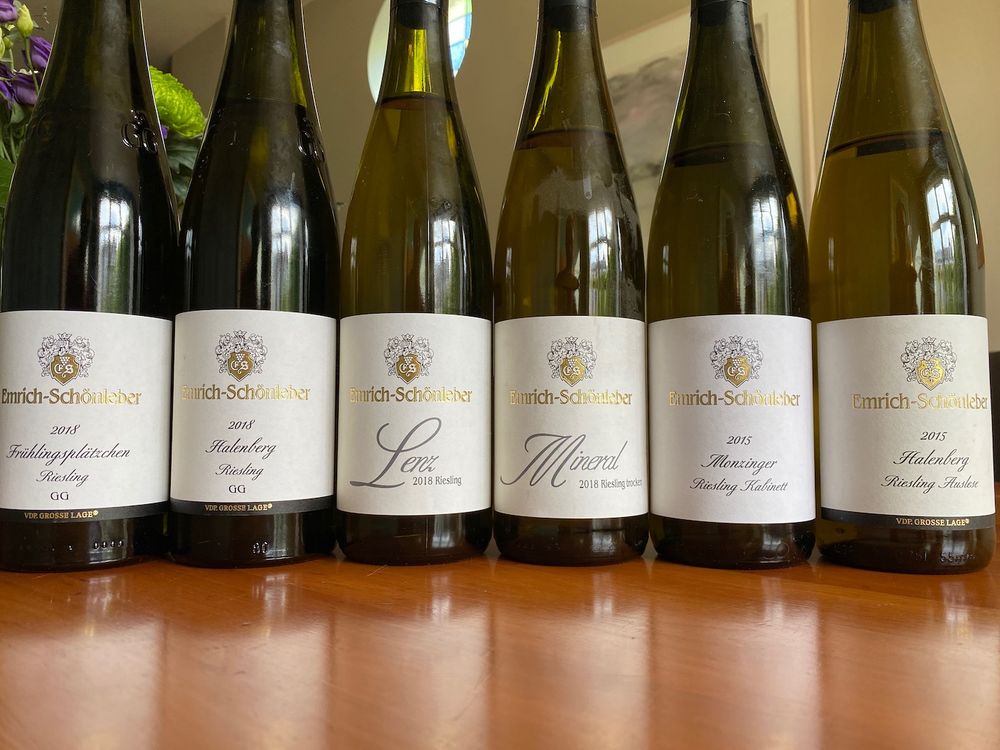
Frank Schönleber picked six wines to show off his portfolio kicking off with the dry wines Lenz Riesling and two Grosses Gewächs from Frühlingsplätzchen and Halenberg (both from 2018) including two wines from the 2015 vintage to show how they age. The most recent vintage, incidentally, is the 2020, the top wines of which got near perfect scores from wine critic James Suckling.
Prior to the tasting Frank talked a bit about the 2018 vintage, saying that the team expected the wines to end up like those from the hot vintage of 2003.
“We were all thinking about the 2003 vintage but 2018 turned out to be so much more elegant in style; when we bottled the 2018 vintage it was still very much on the fruit side, still very generous, but the ABV was lighter and more pleasant than 2003, and the 2018 has more finesse and minerality,” he says.
Frank said that, unlike cool vintages which need at least five years to turn from “no fun at all to the wine of your life”, 2018 is up for much earlier drinking. And he wasn’t wrong. He added that the hotter vintages develop much slower after bottling.
Lenz Riesling, Emrich-Schönleber, 2018
The grapes for Lenz are always pressed straight away into steel with ‘gentle’ whole bunch, (the next wine Mineral on the other hand has a couple of hours maceration).
High toned, pure, aromatically enticing, with notes of bergamot and lemon grass. In the mouth the wine is medium weight, well balanced between ripe yellow stone fruit with a mineral/ acid core, slate, crushed rocks – I got lemonade, lime zest, saline, a wash of fress lemon juice. It reminded me a little of tequila in that mix of lemon, salt and vibrancy, with massive length – not in the ABV, of course, which is 12.5%. £18.67.
Mineral, Riesling, Trocken, Emrich-Schönleber, 2018
This is a blend of 10% from the younger vines in the GG site of Halenberg and 90% of Monziger Niederberg all for 50% of the price of the Grand Cru wines – so does represent marvellous value.
Medium straw to look at; the bouquet has pretty white flowers, jasmine, white peach, lemon; On the palate the wine is medium weight, lovely balance, the acidity has a bit of zing. There’s an inner tension to this wine – mineral, rocks, saline and the fruit that is leaning towards the stone fruit – exotic but not dialled up all the way. 13% ABV. £24.28
Frühlingsplätzchen, Riesling, Grosses Gewächs, Emrich-Schönleber, 2018
Frank explained that the specificity of terroir is more evident in the dry wines than in the sweeter wines and tasting this single vineyard wine alongside the Halenberg, they couldn’t be further apart. The soils from this southwest to southeast-facing site are red slate and gravel interspersed with red-coloured loam.
To look at the wine is medium shiny, luminous gold; the nose is honeyed, fresh, with dried flowers, fresh fennel herb, slate, lemon peel, hints of peach and apple; light to medium bodied, you find lemon pith, lemon oil, with a slatey quality. Although this is high acidity, it is not austere – perfect food wine. 13%. £56.68
Halenberg, Riesling, Grosses Gewächs, Emrich-Schönleber, 2018
Gradients of 70%, a South-facing aspect and stony blue slate and quartzite soils means that in the summer months the vines have to work very hard to find any moisture. The grapes stay smaller than the other Grand Cru sites, with grapefruit and exotic fruit aromas, and a mineral saltiness on the palate. Apart from Halenberg being steeper and the fruit being harvested a few days later than in Frühlingsplätzchen, both vineyards have the same genetic material and are treated the same way in the winery. “Terroir is still 50% a mystery,“ Frank says.
To look at the wine is medium shiny, luminous gold. There is real precision to the bouquet – sharp aromas of lime leaf and Yuzu lime – so pure, fresh, clean and inviting. A touch of oily rag for good measure. The palate is lean, pure, intensely mineral, with a clearly high, crisp acidity – it is tightly wound but there is flesh around the bones, massive length. 13% ABV. £61.68
Monzinger Halenberg, Riesling, Auslese, Emrich-Schönleber, 2015
Quite a small production as the market doesn’t really demand Auslese any more, according to Frank.
Deep yellow-gold; gorgeously honeyed and fruity nose, you can play a game of spot the fruit! – fresh yellow peach, papaya, guava, tinned peach, tangerine; the palate is medium to full bodied, baked apple and sultana, pineapple, meyer lemon, mi cuit apricots, so ripe, honeyed, oleaginous, with the considerable acidity holding it all together, nice fine texture too. Stunning. 8.5% ABV. £44.60
Monzinger, Riesling, Kabinett, Emrich-Schönleber, 2015
Production of Kabinett is 30% greater than it used to be a decade ago – positive signs for a wine that provides outstanding value and has a delightfully light 10% ABV.
Personally I never buy enough Kabinett! One of the most versatile categories of German Riesling – not too sweet not too dry, usually well balanced and can last for years.
To look at the wine is medium yellow-gold; it has a ripe, fruity nose with ripe orchard fruit, meadow flowers, wet slate; In the mouth the wine is medium bodied with a beautiful balance – ripe fruity flavours, framed around a core of steely acidity, well integrated and, at 10% ABV a wine you can easily have a few glasses of. £20.28
The wines of Emrich-Schönleber are sold and distributed in the UK by Justerini & Brooks

